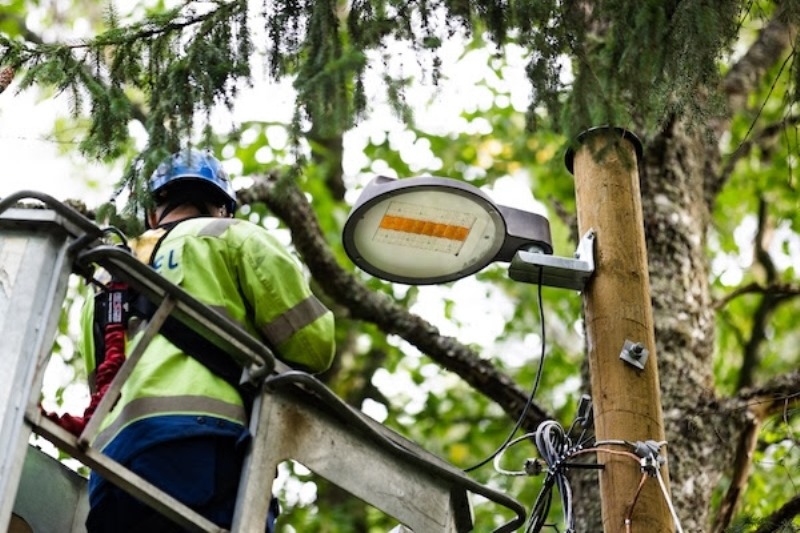- Trump calls Venezuelan airspace ‘closed,’ Maduro denounces ‘colonial threat’ |
- Bangladesh’s potato powerhouse status to be showcased in festival |
- Hasnat prays Khaleda Zia lives to see Sheikh Hasina executed |
- Khaleda responding to treatment: Dr Zahid |
- Chandpur’s winter vegetable harvest modestly eases prices |
Finnish City Unveils Pollinator-Safe Streetlights
Celebrates ‘Night of the Pollinators’

Finnish City of Lahti Unveils Pollinator-Safe Streetlights.
Nocturnal pollinators are a vital part of our ecosystem, but streetlights interfere with their work. To combat this, the city of Lahti in Finland is testing out new, pollinator-friendly lighting technology. The difference in pollinator activity around the new and old streetlights is illustrated in a side-by-side comparison video. Additionally, the city is organizing a ‘Night of the Pollinators’ when the city is decreasing its outdoor lighting and encourages citizens to do the same.
Moths flying around a streetlight is a common sight during summer nights. However, very few realize that this phenomenon is harmful for the pollinators and our entire ecosystem.
A recent study* suggests that insects think the artificial light is light from the moon and stars, which confuses their sense of direction. Pollinators flying around a light are distracted from their nocturnal pollination and are tiring themselves out.
In a Swiss study** researchers observed that 62% less pollinators visited plants in an artificially lit area in comparison to plants in a dark area. Daytime pollinators cannot compensate for the pollination deficit that occurs at night.
Filtering out the blue light
As pollinators are especially drawn towards light in the blue spectrum, the city of Lahti in Finland is piloting new, pollinator-friendly streetlights, which automatically filter out the blue spectrum during night time. When the color spectrum of the light is warm, pollinators aren’t as likely to mistake the streetlights for the night sky and can concentrate on their important work.
In this pilot phase, Lahti has changed a total of 12 lights along a 500 meter long footpath located in the Ritamäki nature reserve.
“We chose an area with lots of pollinators so that the lights do the most good. If the pilot is successful and cost effective, we’ll update the lighting in other areas as well”, says Veera Hämäläinen, Communications Director at the city of Lahti.
Night of the Pollinators: the city turns off some of its lights, encourages citizens to participate
The city of Lahti is organizing a ‘Night of the Pollinators’ on September 7, which it hopes will encourage citizens to turn off their outside lights for part of the night or the entire night. The city will turn off the outdoor lights in two areas near the harbor, taking into account public safety.
According to a study by the University of York***, turning off lights for the entire night or even just a part of it significantly helped pollinators to focus better on pollination.
“Let’s give pollinators some peace of night. This is a good opportunity to remind homeowners and housing companies to think if they really need their outdoor lights or could they be set on a timer to turn off at some point of the night. Both pollinators and your wallet will thank you for every outdoor light you turn off”, Hämäläinen says.
The new streetlights and the ‘Night of the Pollinators’ are a part of Lahti’s ‘Without Pollinators We Cannot Survive’ campaign. It started in June by giving out 10 000 seed packets and 100 ‘I pollinate here’ yard signs to citizens. The signs ran out in half an hour.
The city of Lahti also installed five designer apartments for pollinators to Mukkula manor park. The apartments were designed by internationally awarded interior architect Tapio Anttila. In the fall, the city will present the people of Lahti with a view of the world through the eyes of pollinators using a unique printing technique on outdoor advertisements, where the ad becomes visible in low light with the help of integrated ultraviolet light.

